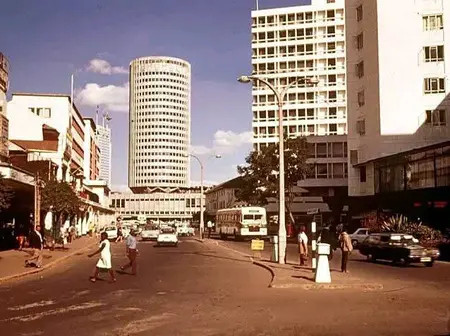When the Nairobi Railway Station was established in 1899 as a supply depot for the Uganda Railway, few imagined it would grow into a capital city.
Chosen for its central location, reliable water supply, and cool climate, the site became the heart of a settlement that would later rise to be East Africa’s hub.
“This city was born out of the railway,” recalls Joseph Mwangi, 89, who grew up near Pangani. “The trains brought workers, traders, and life itself. Without the station, there would be no Nairobi.”
By the 1910s, streets such as Sixth Avenue were being laid, creating the framework of an organized town.
These early streets carried colonial names that have since been changed to reflect Kenya’s history.
Duke Street became Ronald Ngala Street, Victoria Street was renamed Tom Mboya Street, Government Road is today’s Moi Avenue, and Coronation Avenue was rechristened Harambee Avenue.
Salisbury Road, once called Princess Elizabeth Way after the royal’s 1952 visit, is now Uhuru Highway.
The 1940s brought modern infrastructure such as the Ruiru power station, powering a city on the move. In February 1952, Princess Elizabeth herself opened the Princess Elizabeth Hospital for Women on Delamere Avenue the building that today houses the University of Nairobi Dental School. But that same year, Kenya was thrown into turmoil.
On October 20, 1952, a State of Emergency was declared. A day later, police carried out random roundups on Delamere Avenue (now Kenyatta Avenue).
“That week changed everything,” says Mary Wanjiku, 92, who witnessed the crackdowns. “People were terrified, soldiers filled the streets, and Nairobi felt like it was under siege.”
The 1960s heralded independence, and with it, Nairobi’s transformation into a capital that reflected a new national identity.
Kenyatta Avenue became the centerpiece, flanked by the National and Grindlays Bank today’s Kenya National Archives and the Macmillan Memorial Library.
Mama Ngina Street (once Queen’s Way) became symbolic of a country reclaiming its dignity. Harambee House, the former Ministry of Works, emerged as the seat of power, while City Stadium, previously Native Stadium, hosted patriotic celebrations. By the 1970s, Nairobi was a city of growth and pride.
Kimathi Street and Moi Avenue bustled with commerce, Corner House stood as a landmark at Mama Ngina and Kimathi, and Wakefield Trading Company thrived on Moi Avenue.
Imenti House, opened in 1978, became a symbol of a clean, modern Nairobi. But the decade also carried sorrow.
In 1978, thousands lined Valley Road to witness the state funeral procession of Mzee Jomo Kenyatta, Kenya’s founding President.
The 1980s marked a more confident era. On December 12, 1988, Kasarani Stadium was filled with colour, music, and patriotism as Kenyans celebrated the 25th anniversary of independence. Nairobi had come full circle from a colonial railway outpost to a thriving African capital.
Today, the renamed streets carry the weight of history: Biashara Street (once Bazaar Street), Muindi Mbingu Street (formerly Stewart Street), and Harry Thuku Road (once College Road).
“Every street tells a story,” says Peter Otieno, 75, a retired teacher. “When I walk along Tom Mboya Street or Ronald Ngala Street, I see not just shops and traffic I see the struggle, the pride, and the memory of how this city was built.”
More than a century since its founding, Nairobi remains a living museum. Its streets are not just paths of movement but chronicles of resilience reminders that the capital’s history is etched not only in stone and asphalt, but also in the names we carry forward.

Leave a Reply